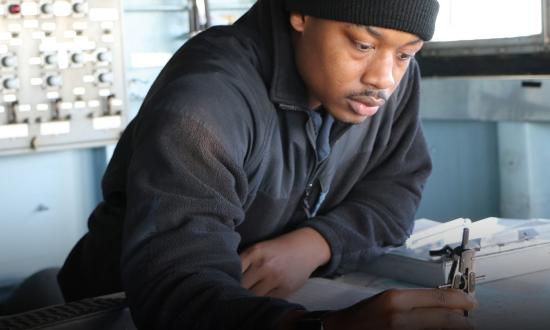More than 20 years ago, naval leaders embraced the promise of computer technology and began eliminating paper manuals, charts, and doctrine, as well as entire binders of administrative programs. Today, many ships maintain manuals in PDF form, use electronic charts, sign off qualifications in computer programs, and manage maintenance, training, and other administration electronically.
Going “paperless,” however, has not made us more efficient. On board my submarine, only 6 of my 19 officers have a dedicated computer. Things are worse for my chiefs and junior enlisted. At a recent hot wash, I discovered that most of my sonar technicians had not fully read their system employment manual, as the 12 sailors share only two computers to update training, qualifications, and maintenance records, as well as to study manuals and training products. We have more computers but not enough network drops to connect them. I am no longer surprised when I find my sailors have not yet updated an electronic database or seen an electronic training plan.
Even for those of us with a dedicated computer, the paperless ship does not turn into time savings. I cannot count the amount of time I have waited for an electronic chart to zoom in, a PDF manual to open (or fail to open because it is corrupted), or the electronic qualification program to update after I sign a single checkout among the dozens I must sign. This is partially because of the antiquated nature of our computer networks: My Panasonic Toughbook CF-53 was new in 2011, the operating system has not been supported by Microsoft for more than two years, and our network topology is cobbled together.
Our government-provided software is not user friendly and consumes far more time and effort than a paper program. I once spent an entire day figuring out how to find and display training records that should have been easily accessible—instead of leading sailors, reading doctrine, or running training.
Our internet connectivity is not much better. Because connectivity at a shipyard is so poor, my independent duty corpsman, yeomen, and educational services officer input their required updates to Navy databases from home after working hours. One of my limited duty officers explained that things were no better on board the aircraft carrier on which he recently served: Sailors completed their professional military knowledge eligibility exams on a Navy app on their smartphones because the carrier’s computers had such poor connectivity.
In short, our shift to a “paperless” ship negatively affects my sailors’ ability to access training products, doctrine, manuals, and other references, as well as the electronic programs they need to plan and document training and maintenance.
In the short term, the Navy should take the following actions:
• Class ships into tiers based on the ratio of sailors to computers or tablets. If a ship has more than two sailors to every computer or tablet, the Navy should provide additional printed references and identify specific lockers and stowage areas to serve as ships’ libraries.
• Allocate additional printers and ink to these ships to allow sailors to more easily print references that can be studied or used away from an electronic screen.
• Direct these ships to use paper documentation for various programs (such as training and maintenance) when a lack of electronic access makes the upkeep and updating of these programs unnecessarily time consuming and burdensome.
In the long term, Navy information technology needs to transition into the third decade of the 21st century. A sailor of 2022 should rightfully expect to use a tablet wirelessly connected to a secure classified network that is fast, easy to navigate, and possesses all references, training products, and required electronic databases. That this still seems Utopian in an era in which every sailor possesses a smartphone is immensely disappointing.
This is a genuine day-to-day war-fighting issue. The Navy should build the required information technology infrastructure on board every ship and submarine to ensure sailors are better trained, supported, and equipped. Only then will the Navy be ready to be “paperless.”







